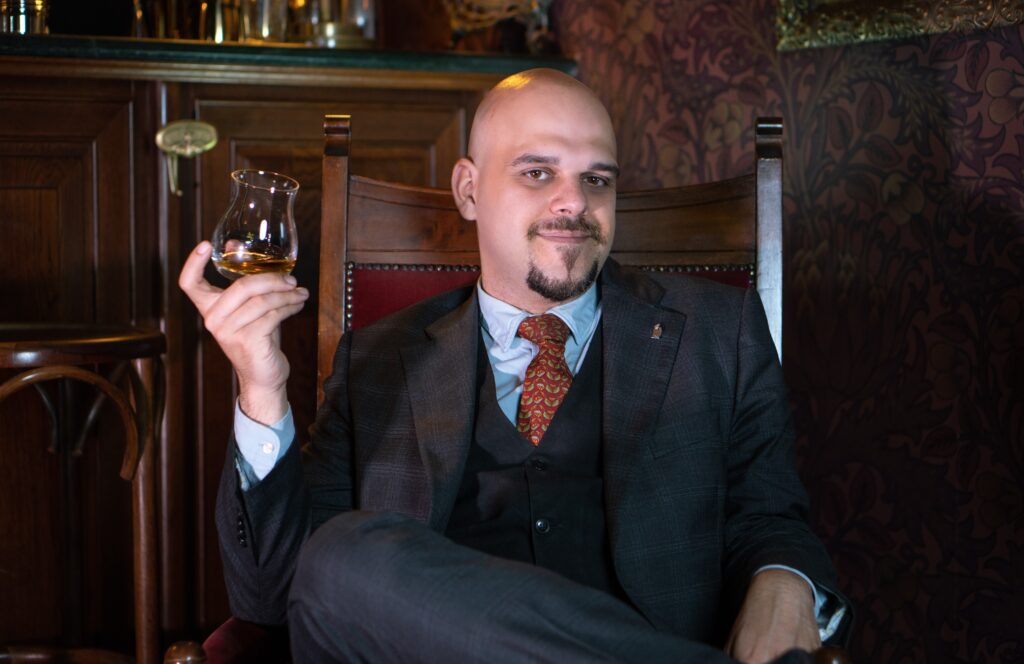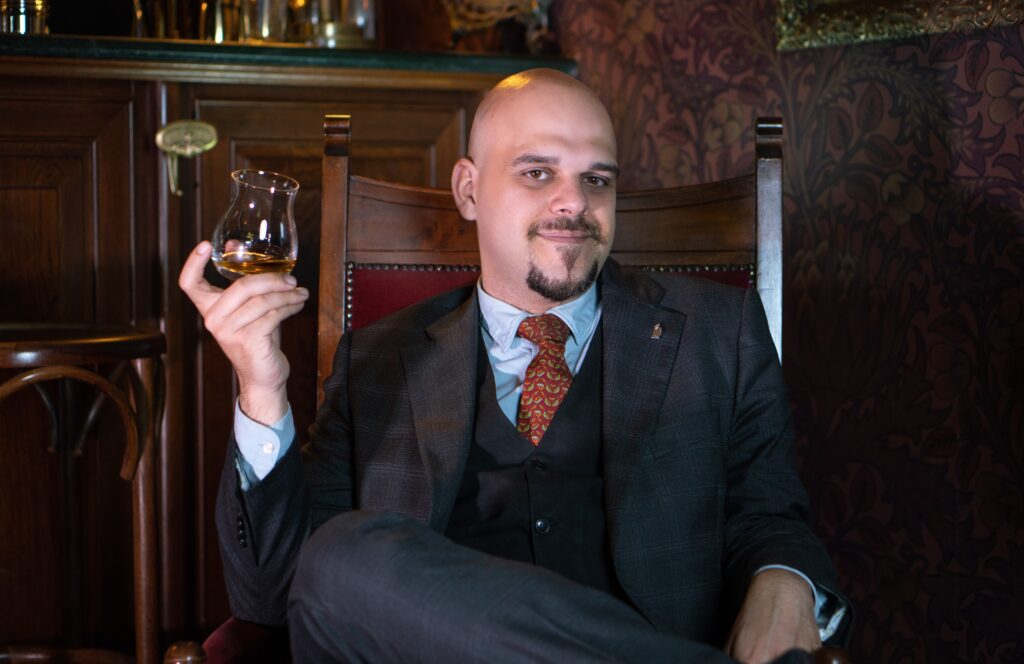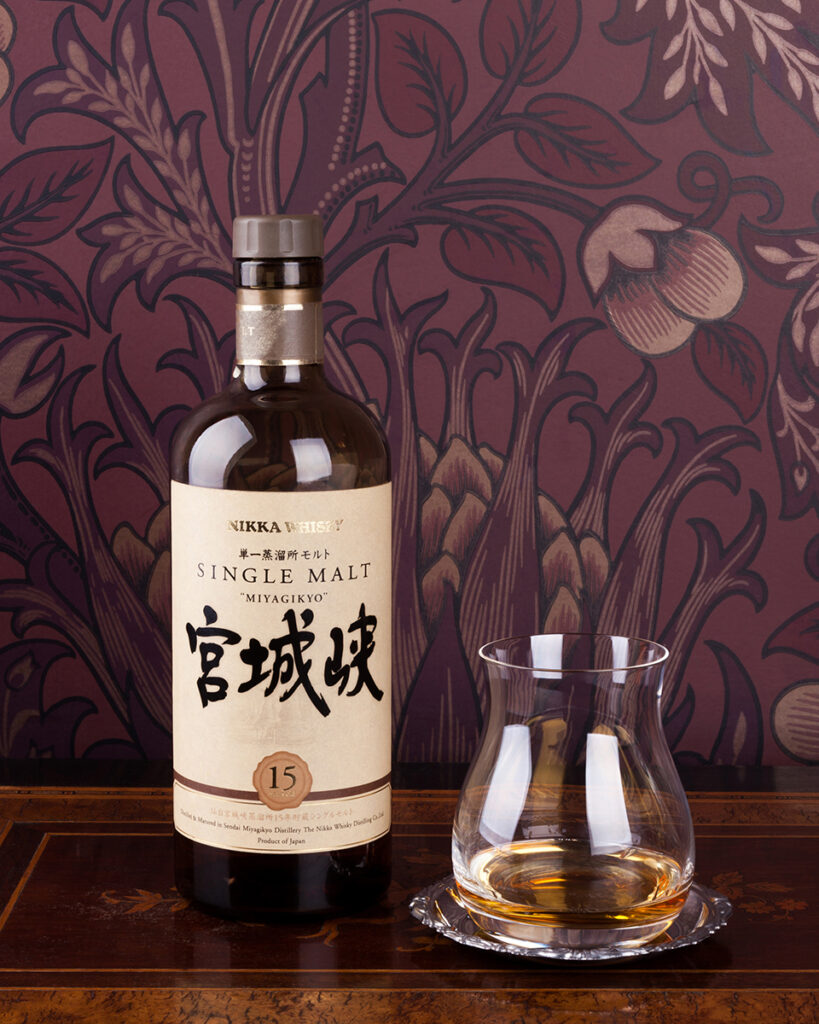[:it]Japanese whisky: curiosities, history and current affairs with Daniele Cancellara[:]

[:en]
Although it is still perceived as a very recent product, Japanese whiskey was born almost a century ago, thanks to the importation of the art of distillation from the founding country of this world-famous drink, Scotland. It is with the expert of the theme and bar manager of the Rasputin secret bar in Florence, Daniele Cancellara, that we decided to delve deeper into the theme.
When and how was Japanese whiskey born?
Japanese whiskey was born in the early 1900s thanks to Masataka Taketsuru, who was sent by the Settsu Shuzo Company to Scotland to learn the secrets of Scotch whiskey distillation, to bring back to Japan. During his stay, he studied chemistry at the University of Glasgow, married a Scottish girl who became his future wife, Rita Cowan, worked at the Longmorn distilleries in Speyside and Hazelburn in Campbeltown, before returning to Japan in 1920. When he was told that the project had been abandoned, he found a new ally in Suntory, at the time led by founder Shinjirō Torii, and therefore managed to open the first Japanese whiskey distillery, Yamazaki, in 1924 near Kyoto. In the following years the number of distilleries and consumers grew in the nation and with it the range of types produced. While at the beginning they were made exclusively blended, in 1984 the first single malt was born, a whiskey produced exclusively with barley malt.
When did Japanese whiskey become popular?
Before the last twenty years there was not much consideration for the product; it was believed that it would never reach the level of Scotch whisky, while respecting its production style. The large market share, until the new millennium, was destined for the domestic market while only a small part was represented by exports. The real turning point occurred in 2001, when the magazine on the most important topic in the world, Whiskey Magazine, awarded the "Best of the Best" prize at the Whiskey Magazine's Awards to the Yoichi 15 YO Sherry Cask. From then on Suntory, more than others, has obtained numerous international awards, including the gold medal at the International Spirits Challenge in 2003. In 2008, at the World Whiskey Awards two Japanese winners were awarded, the Yoichi 20 YO among the Single Malt and the Hibiki 30 YO among the Blended. In recent years, in some blind tastings, Japanese whiskeys have even managed to outperform their Scottish rivals.

What differences does it have compared to its Scottish rivals?
Compared to Scotch whiskey, Japanese whiskey faithfully follows the production process - it is no coincidence that the art was imported from Scotland - while not presenting any imperfections in the final result, although sometimes this may be one of the added values of this distillate. Unlike other specifications, in this case, to be defined as such, the product must exclusively be aged in Japan, an aspect which inevitably ends up becoming central in this process. It is not necessary for the previous phases to also be carried out in the Japanese state and it is precisely for this reason that various companies import the whisky, from Scotland or the United States, age it in Japan and then bottle it. The peculiarity of the aging is undoubtedly the wood, given that some types used here, such as Japanese cedar or Japanese Mizunara oak, are native - and therefore capable of imparting unique aromas - while the remaining part is aged in barrels previously used for whiskey.
How many distilleries are there currently in Japan?
Since 2011, with the reopening of the Shinshu Distillery, there have been eight distilleries in total although, as previously mentioned, many more companies produce Japanese whisky. The eight currently active distilleries are: Yamazaki, Hakushu, Yoichi, Miyagikyo, Fuji Gotemba, Chichibu, Shinshu, White Oak.

How many years of aging can Japanese whiskey reach and what is the minimum period for it to be defined as such?
To enter Europe, the product cannot age less than 3 years. In Japan the drink that comes out of the still, without any aging period, can already be defined as whisky. The manufacturer, of course, decides how long a product should age, based on the starting raw material, the wood and various other factors. The aging record achieved so far is that of a Yamazaki Single Malt, which reached 55 years and was sold at an auction in Hong Kong for the record price of 795,000 dollars.
How many years has it been available in Europe? Who is it distributed by in Italy?
The diffusion in Europe began in 1997-1998, when the Paris whiskey house imported the first labels in 1997/98, without great success. Sofia Coppola's 2003 film Lost in Translation, in which Bill Murray is filmed while sipping Suntory whisky, undoubtedly had an important impact on the sale of whiskey on our continent, in addition to international recognition. In more recent years, Japan has struggled to keep up with increased demand, so much so that aged whiskeys are almost no longer found on the market. As far as Italy is concerned, the very first bottles could be found here in the early 2000s. Currently, the three leading companies in distribution are Stock Spirits, which imports Santory, Velier which does the same with Nikka, and finally Rinaldi 1957, which is aiming for new, smaller distilleries, such as Kamiki, which makes a blended malt with the same wood used to make Shinto temples, Japanese cedar.
How do you think it's best to taste it?
Similarly to other whiskeys neat - the way I prefer it - in Glencairn type glasses, without ice. In Japan it is customary to drink it as a higball, therefore with carbonated water or in the mizuwari version, with ice and still water. While in Europe we tend to prefer it neat, there we prefer to taste it like this.
How can it be used in mixing? In which cocktail can you best exalt yourself?
In mixing it is enhanced when used to create classic twists on Old Fashioneds - perfect with Nikka Coffee Grain, a whiskey made with corn 51% - Manhattan, Whiskey Sour or for the previously mentioned highball. As always, the consideration that every whiskey has its use is valid. Japanese whiskeys can also be used for newly created cocktails, like the ones I propose at Rasputin. Two of these are Dedicated to Jiro, my cocktail dedicated to Jiro Ono which I serve in a bowl of Japanese rice and prepare with Nikka Coffee Grain, Akitora Junmai Ginjo Sake, Lemon Juice, Yuzu Syrup and Green Pepper, Sichimi Togarashi Tincture and Egg White, and the Sukiyaki Western, with Toki Suntory Blended Whiskey, Lemon Juice, Azuki Syrup and Teriyaki Sauce.


What's your favorite Japanese whiskey cocktail?
The classic highball whisky, because it best enhances what the product is, both very rounded blended whiskeys and single malts.
Recipe:
Fill a highball glass with blocks of ice.
Pour 5 cl of Nikka Miyagikyo No Age.
Fill with carbonated water.
Garnish with a lemon twist.[:]
